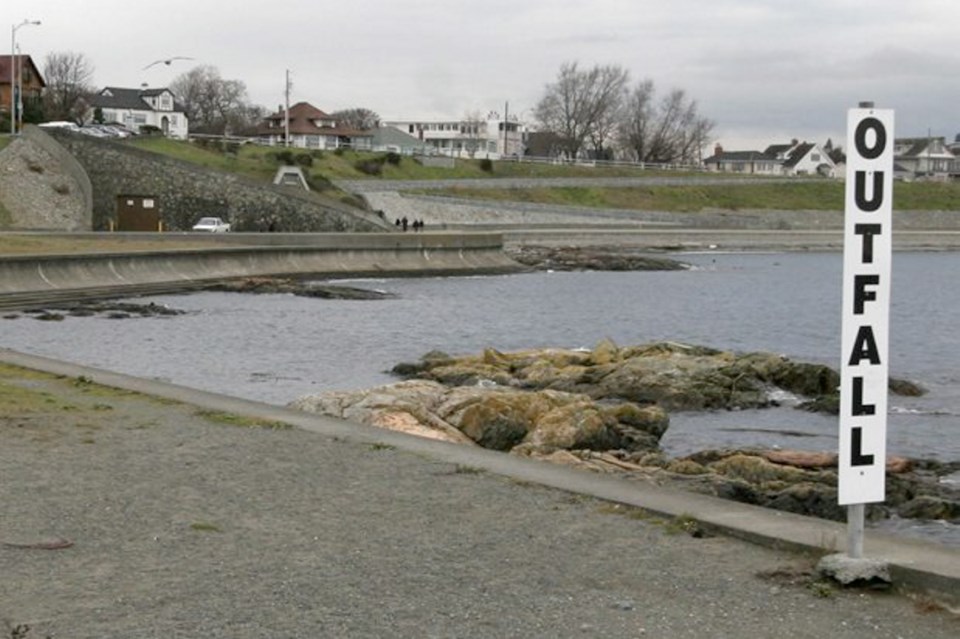Greater Victoria’s daily flush of 130 million litres of raw sewage and 40,000 kilograms of solids into Haro Strait and toward Race Rocks is neither environmentally nor politically sustainable.
Just ask Washington state Gov. Jay Inslee, who wrote to Premier Christy Clark on June 10, 2014, noting that: “It is now more than 20 years since your province agreed to implement wastewater treatment in Greater Victoria.”
It’s clear that our neighbours’ patience is running out. And here at home, fatigue is setting in. The issue has dragged on far too long. It’s long past time to put a shovel in the ground and start work on a wastewater treatment facility.
Victoria’s business and tourism leaders get it. Tourism Victoria and the Chamber of Commerce have long advocated secondary or better treatment at the most affordable cost to local taxpayers.
But some local politicians want to keep talking, taking yet another look at alternative sites to the one that was finally approved two years ago by all three levels of government.
That approach will only lead to further delay and increased costs — a fact confirmed in the latest Capital Regional District consultants’ report from December that said the multi-site options being considered will take years more to complete and add big costs to the bottom line.
What’s more, further delay will likely diminish or risk entirely the money that Ottawa and Victoria have pledged.
Make no mistake: If civic leaders in Greater Victoria think they can keep procrastinating and keep the money committed to sewage, they’re kidding themselves.
The Federation of Canadian Municipalities estimates Canada’s municipal infrastructure deficit to be more than $200 billion for worn-out bridges, roads, airports, unfunded transit systems and, yes, wastewater-treatment systems. If the CRD misses more deadlines/extensions, Canada’s 5,000 local governments would love to spend this region’s already approved $500-million wastewater funding on their own unfunded infrastructure projects.
And if that were to happen, people here would be left with the legal obligation to treat sewage with less help to pay for it — a financial disaster that would mean sidelining other regional priorities such as affordable housing, transit and other vital infrastructure.
When I was premier in 1993, I directed the province to put on the table one-third financing for a secondary-treatment plant that cost less than $400 million. Today, that plant would not only have been built but be almost debt-free. The then-federal government balked. And the core of the capital region didn’t proceed (although, to their credit, Sidney, North Saanich and Central Saanich did build a treatment plant, now entirely paid for).
Greater Victoria risks chasing its tail for years longer. This not only risks the project funding from Ottawa and B.C., but could bring years of fines for non-compliance with 21st-century laws such as the province’s Environmental Management Act and federal Wastewater Systems Effluent regulations.
Sober, considered action is needed now. The approved plan should be viewed alongside a financial and environmental cost-benefit analysis of the latest new options and the right decision made quickly. Otherwise, the actions of local officials can only be seen as highly irresponsible.
In every other part of the world — and as nearby as Blaine and Port Angeles, Washington — folks seem to get on with it and plan, build and implement wastewater treatment to high environmental standards. It’s time Victoria got on with it, too.
Mike Harcourt is the former premier of British Columbia and a former student at Willows elementary, Lansdowne and Oak Bay High School.



